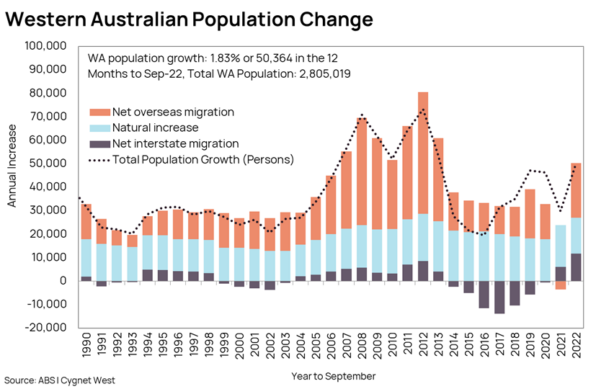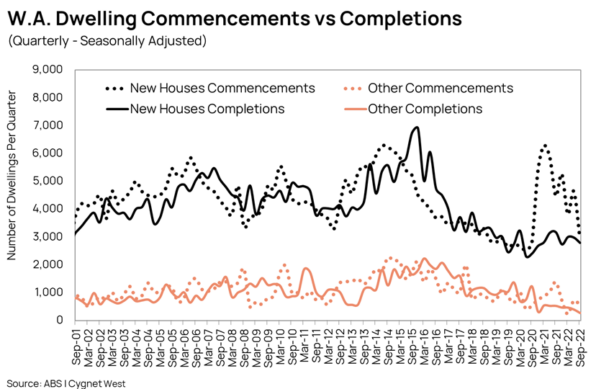- Previous
- Share

Overseas migration underpinning the strongest growth since 2013
The recent release of the ABS population data for September 2022 shows the largest growth in Western Australia’s population since September 2013. In the year to September 2022, Western Australia’s population grew by 1.83% or 50,364 residents to reach 2,805,019 people. The largest contributor to this growth was overseas migration.
A combination of pent-up demand (and/or processing of visa application backlogs) resulting from the pandemic border closure has helped net overseas migration rise to 23,311 people in the year to September 2022. This is in stark contrast to the 3,477 people Western Australia lost to overseas destinations during 2021.
The strong jobs market in Western Australia may have also help interstate migration play a healthy part in this growth, with net interstate migration increasing to 11,658 people in the year to September 2022, up from 6,051 in the corresponding period of 2021.

Another interesting takeaway from the recent release is the natural increase (births vs deaths) data which indicates a notable decline in the number of births in the year ending September 2022. The total contribution to population growth from natural increase amounted to just 15,395 people. This is 13.6% lower than the previous year, and the lowest level since 2006, when Western Australia’s population was around 37% smaller.
The notable shift in natural increase’s contribution to population growth has us questioning whether the recent sharp increase in the cost of living, recovery in international travel, changing life goals after the pandemic and even developments in the geopolitical environment over past years, has led to changing attitudes in household and family formation, and whether these changes are temporary or more permanent.

Looking ahead, based on the Department of Home Affairs’ data on arrivals and departures from overseas, as well as its current position in the cycle and recent trends, it appears likely that overseas migration will remain the primary driver of population growth for at least the next year. This is good news for the state’s employment pool and economy, but not good for renters in a residential market that is characterised by a significant shortage of rental accommodation, and a building sector struggling to lift dwelling completions at such a critical point in the migration cycle.


